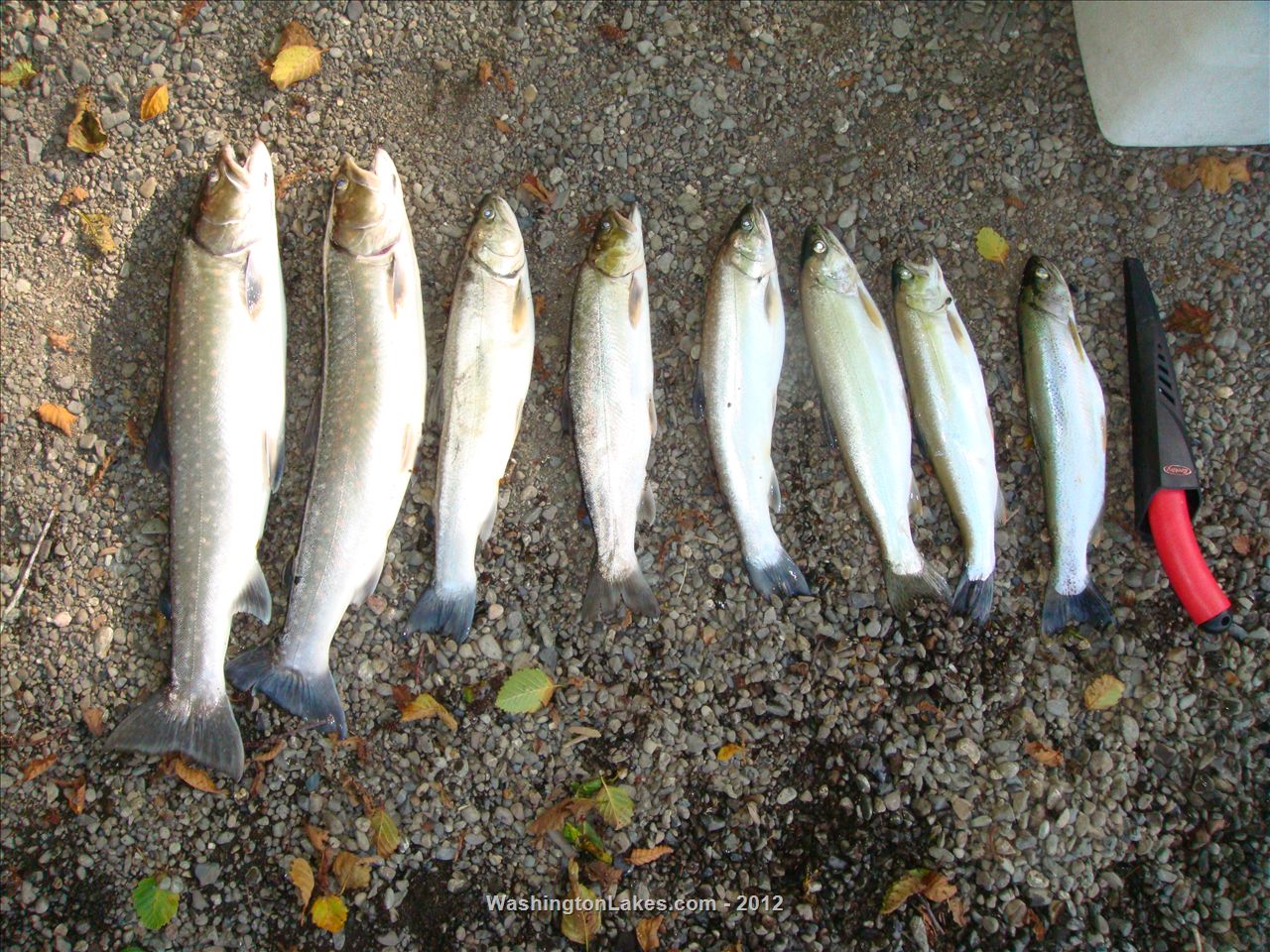
rpm10
7/5/2012 3:50:00 PMBob R
7/5/2012 4:15:00 PM
'OL GREY DOG
7/5/2012 6:43:00 PMNo_Bad_Skunks
7/5/2012 10:11:00 PMBob R
7/5/2012 11:20:00 PMNo_Bad_Skunks
7/6/2012 7:26:00 AM
paintermott
7/6/2012 10:00:00 PM
paintermott
7/6/2012 10:12:00 PMDollies are anadromous (sea-going) fish while Bull trout (Salvelinus confluentus) are fluvial- defined above.
Again, nice fish Bob.
Bob R
7/8/2012 7:38:00 AM
paintermott
7/8/2012 2:05:00 PMThe Dolly Varden is a trout-like char with pale pink, lilac, or red spots along the flanks. It has an olive-green to brown body, a round shaped head with an upper jaw that curves slightly upwards. Fins are generally transparent and without black spots on the dorsal fin; pelvic and anal fins are often white or creamy on the leading edge with a single thin black and thin red line behind; the caudal fin is slightly forked. Relative to bull trout, the spots on the back are small and crowded and bull trout have a broader flattened head shape.
Dolly Varden and bull trout are difficult to distinguish in the field. Where they coexist, the life history of adults is usually strikingly different. Typically, adult Dolly Varden are small (10-20 cm), stream-resident, and feed on drift; whereas adult bull trout are large (55-95 cm), migratory, and piscivorous. As far as is known, Dolly Varden and bull trout hybridize (interbreeding of two different species) wherever they coexist. Despite this persistent hybridization, the two species maintain themselves as separate entities with life histories adapted to two alternative ecologies. In the Williston area, Dolly Varden coexist with bull trout for part of their life cycle in the upper Finlay drainages (tributaries to Thutade Lake).
Native populations of bull trout (S. confluentus) are in danger of hybridization with introduced brook trout in the Pacific Northwest. The relationship or "how closely related these fish are" (genetically speaking) isn't the main culprit of hybridization (inter breeding)- it may have more to do with the introduction and population of invasive, non indigenous species like the Brook and Brown (just to name a couple) and the fact that they (Dollies and Bulls) live in the same areas (which is just incidental). The fact is, the fisheries community of scientists and biologists see these fish as two different beasts (which is factually and scientifically correct).
On a side note, I prefer to c&r all my fish. I just like the thrill of taking a picture of my catch and preserving what's left in our rivers and lakes for those to come so they can experience what I experience....which is why I don't hunt. Imagine c&r'ing an Elk or a Deer lol what would you do, shoot it in the leg, take it to the vet and reintroduce it in the wild to shoot another day? lmao I'll stick to C&R'ing my fish.
BTW, I can't imagine Dollies or Bulls tasting good at all. Do they actually taste good? How do you prepare them..a little salt, lemon, onion wrapped in foil over a grill? do you smoke them?
Finally, I do hand it to the tribes in this state. They seem to manage their environment much better than we (the U.S.) does. If they claim to have a certain amount of fish that is conducive to retention, I believe them....but, I still wouldn't keep them
*http://www.bchydro.com/pwcp/fish/dolly_varden.shtml
*http://www.fishbc.com/adventure/angling/game_fish/dollyvar.phtml
